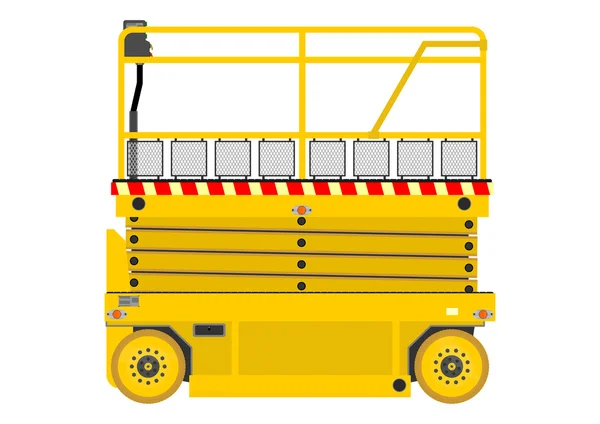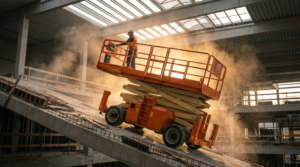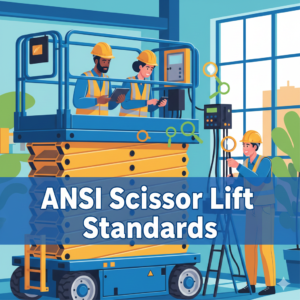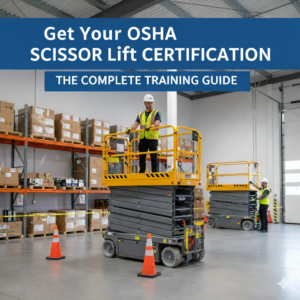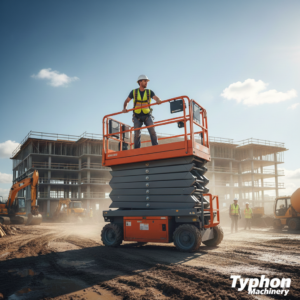When it comes to selecting the right scissor lift for your construction or maintenance project, it’s essential to consider the specific requirements of the job site. Two popular options for accessing elevated work areas are rough terrain scissor lifts and slab scissor lifts. Both types of lifts offer unique features and capabilities that cater to different environments and applications. In this article, we will compare rough terrain scissor lifts and slab scissor lifts to help you make an informed decision for your next project.
Rough Terrain Scissor Lifts
Rough terrain scissor lifts are designed to navigate challenging outdoor environments, such as uneven or rugged terrain. These lifts are equipped with robust, heavy-duty tires that provide excellent traction and stability on rough surfaces. They are commonly used in construction sites, industrial facilities, and outdoor maintenance projects where traditional scissor lifts may struggle to operate effectively.
One of the key advantages of rough terrain scissor lifts is their ability to handle inclines and rough terrain with ease. Their rugged construction and powerful engines make them well-suited for demanding outdoor applications. Additionally, many rough terrain scissor lifts offer impressive platform heights and weight capacities, allowing workers to access elevated work areas safely and efficiently.
Slab Scissor Lifts
Slab scissor lifts, on the other hand, are designed for indoor and flat-surface applications. These lifts are ideal for navigating smooth, level surfaces such as warehouse floors, retail spaces, and office buildings. Slab scissor lifts are equipped with non-marking tires, making them suitable for sensitive flooring materials commonly found in indoor environments.
One of the primary advantages of slab scissor lifts is their compact size and maneuverability. They are designed to fit through standard doorways and narrow aisles, making them an excellent choice for indoor maintenance and construction projects where space is limited. Additionally, slab scissor lifts offer quiet operation, making them suitable for noise-sensitive environments.
Comparison
When comparing rough terrain scissor lifts and slab scissor lifts, several factors should be considered to determine the most suitable option for your project. Here are some key points to consider:
1. Terrain:
Rough terrain scissor lifts are designed for outdoor use on uneven or rugged surfaces, while slab scissor lifts are best suited for indoor applications on smooth, level surfaces.
2. Size and Maneuverability:
Slab scissor lifts are more compact and maneuverable, making them suitable for navigating tight spaces and indoor environments. Rough terrain scissor lifts are larger and more robust, designed to handle challenging outdoor conditions.
3. Weight Capacity and Platform Height:
Rough terrain scissor lifts typically offer higher weight capacities and platform heights compared to slab scissor lifts, making them suitable for heavy-duty outdoor tasks.
4. Traction and Stability:
Rough terrain scissor lifts are equipped with heavy-duty tires for superior traction and stability on uneven surfaces, while slab scissor lifts feature non-marking tires for smooth indoor operation.
5. Noise Level:
Slab scissor lifts operate quietly, making them suitable for noise-sensitive environments such as retail spaces and office buildings. Rough terrain scissor lifts may produce more noise due to their powerful engines and rugged construction.
Ultimately, the choice between rough terrain and slab scissor lifts depends on the specific requirements of your project. If you need a lift for outdoor construction or maintenance tasks on uneven terrain, a rough terrain scissor lift would be the ideal choice. On the other hand, if you require a lift for indoor applications in confined spaces, a slab scissor lift would be more suitable.
In conclusion, both rough terrain scissor lifts and slab scissor lifts offer unique features and capabilities that cater to different work environments. By understanding the specific requirements of your project, you can select the most suitable lift to ensure safe and efficient access to elevated work areas. Whether you need a robust outdoor solution or a compact indoor option, there is a scissor lift available to meet your needs. Consider the factors outlined in this article to make an informed decision for your next project.
Learn More : SCISSOR LIFT WEIGHT CAPACITY CONSIDERATIONS FOR VARIOUS APPLICATIONS

